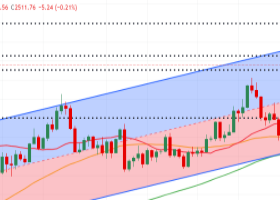As MetaSignalsPro aims to belong to the elite of EA providers of this platform with the strongest track record in the long term,
we feel important to give the community all to tools to distinguish the good from the bad offers you can get.
Indeed, presenting backtests for an algorithmic trading system (like an Expert Advisor) comes with the responsibility to ensure they are accurate and not misleading.
However, some developers or sellers may engage in manipulations to make backtests appear more favorable.
🎓 Here are common manipulations and wrongdoings when presenting backtests to clients:
📌 Over-Optimization (Curve Fitting) 📊
- What it is: Fine-tuning the algorithm’s parameters so that it performs exceptionally well on historical data but poorly in real-market conditions.
- Why it's wrong: Over-optimized strategies often fail in live markets because they are tailored to specific historical patterns that are unlikely to repeat exactly.
- Signs of this issue: Unrealistically high win rates, unusually low drawdowns, or exceptional performance over specific periods.
📌 Cherry-Picking Data 🍒
- What it is: Selecting only favorable timeframes or periods in the backtest data to make the strategy appear more profitable than it really is.
- Why it's wrong: Clients expect a robust algorithm that works across different market conditions, not just in carefully chosen, favorable periods.
- Signs of this issue: The backtest may show exceptional performance in a narrow timeframe (e.g., only during a bullish market), but may fail during bear markets or sideways trends.
📌 Manipulating Stop-Losses & Take-Profits 🚫
- What it is: Adjusting or removing losing trades (stop-losses) in historical data to make the EA appear more profitable, or artificially increasing take-profit levels.
- Why it's wrong: This distorts the risk-reward ratio and provides a false sense of security to potential buyers.
- Signs of this issue: If you notice that very few or no losses are shown in a long historical test, or that winning trades are excessively profitable, it could indicate manipulation.
📌 Excluding Slippage & Spread Costs 💰
- What it is: Not accounting for real-world slippage (the difference between expected and actual trade execution prices) and spread costs (the difference between bid and ask prices).
- Why it's wrong: Backtests without these real-world conditions will almost always outperform live trading. In reality, slippage and spread can erode profits.
- Signs of this issue: If spreads or slippage are not mentioned in the backtest description, or if performance results are far better than expected for a high-volatility pair like EUR/USD or Bitcoin.
📌 Hiding Drawdowns 📉
- What it is: Misrepresenting or downplaying significant periods of equity drawdown, where the account balance dips before recovering.
- Why it's wrong: Clients need to know the potential risk exposure. Hiding or minimizing drawdowns creates unrealistic expectations of safety.
- Signs of this issue: Lack of mention or minimal representation of drawdown data, or the drawdown is disproportionately low compared to returns.
📌 Not Using Walk-Forward Testing ⏭️
- What it is: Only backtesting on in-sample data without performing walk-forward testing, which evaluates the strategy on unseen data to check its adaptability to different market conditions.
- Why it's wrong: A strategy that performs well on historical data but poorly on new data indicates overfitting or lack of robustness.
- Signs of this issue: If only backtested results are shown without any out-of-sample (walk-forward) testing, it might be a sign that the EA is not adaptable to future conditions.
📌 Using Historical Data with Gaps or Incorrect Pricing ⏳
- What it is: Running backtests on incomplete or low-quality data, leading to artificially favorable results.
- Why it's wrong: Incorrect or missing data can lead to trades being executed at unrealistic prices, creating a false sense of how the strategy performs.
- Signs of this issue: Backtests that show consistent profitability despite periods of extreme market volatility or pricing irregularities.
📌 Fictitious Account Balance & Leverage 💵
- What it is: Using unrealistically high starting account balances or leverage in backtests, leading to exaggerated profits that wouldn’t be feasible for most traders.
- Why it's wrong: It creates misleading expectations of potential profits and risks.
- Signs of this issue: Extremely high initial account balances (e.g., $1 million) or excessive leverage (e.g., 1:500) that most retail traders would not use.
📌 Eliminating Trading Commissions 💳
- What it is: Running backtests without factoring in trading commissions that are typically charged by brokers for each trade executed.
- Why it's wrong: This inflates the backtested profit margin, as commissions can significantly impact the profitability of strategies, especially those with frequent trades.
- Signs of this issue: If commission costs are not clearly mentioned or included in the backtesting process, or performance results appear too good to be true for high-frequency trading systems.
📌 Unrealistic Order Execution ⚡
- What it is: Assuming that all trades in the backtest were executed immediately at the best possible price, which doesn’t reflect real-world execution delays.
- Why it's wrong: In real trading, market conditions like volatility, liquidity, and broker delays can cause orders to be filled at worse prices than expected.
- Signs of this issue: If every trade is filled perfectly at desired price points with no mention of order slippage or market impact.
📌 Lack of Transparency on Trading Logic 🔍
- What it is: Not disclosing the key logic behind the EA, making it difficult for the client to evaluate its validity or understand how it makes trading decisions.
- Why it's wrong: Clients have a right to understand at least the basic decision-making principles behind an algorithm. A vague or hidden strategy could indicate manipulation or over-reliance on luck in certain market conditions.
- Signs of this issue: Little to no description of how the EA generates signals or manages risk, with an over-reliance on showing impressive returns.
🔹 At MetaSignalsPro, we commit to deliver high quality Experts Advisors
📍 Verified Backtests: we will provide third-party verified backtests, on Myfxbook where clients can see performance and equity curves with transparency.
📍 Walk-Forward Tests: we will demonstrate how our EA performs not only on historical data but in future market conditions.
📍 Full Transparency: we will be transparent about any potential weaknesses of the system, such as known periods of underperformance, drawdowns, or specific market conditions that can cause losses.
📍 Include Real Costs: we have ensured that our backtests account for slippage, spreads, commissions, and other real-world trading costs.
☝️ We will very soon launch our new EA on MQL5.com
👉 Join our group if you want to be part of the first ones to get special offer for the launch



